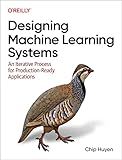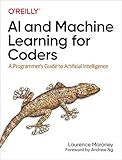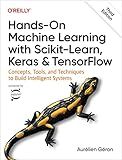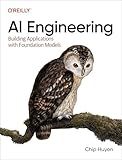Best AI and Machine Learning Books to Buy in December 2025

Designing Machine Learning Systems: An Iterative Process for Production-Ready Applications



AI and Machine Learning for Coders: A Programmer's Guide to Artificial Intelligence



The Hundred-Page Machine Learning Book (The Hundred-Page Books)



Hands-On Machine Learning with Scikit-Learn, Keras, and TensorFlow: Concepts, Tools, and Techniques to Build Intelligent Systems
- TRACK ML PROJECTS END-TO-END WITH SCIKIT-LEARN SIMPLICITY.
- EXPLORE POWERFUL MODELS: SVMS, TREES, FORESTS & ENSEMBLE METHODS.
- BUILD NEURAL NETS WITH TENSORFLOW & KERAS FOR CUTTING-EDGE AI.



Why Machines Learn: The Elegant Math Behind Modern AI



Master AI for Beginners: Develop Artificial Intelligence Basics, Understand Machine Learning, and Unlock the Power of Automation for Business Productivity, and Everyday Life



AI Engineering: Building Applications with Foundation Models


In TensorFlow, you can add loss functions by specifying the loss function during model compilation. This is typically done by passing the desired loss function as an argument to the compile method of the model object.
For example, if you want to use the Mean Squared Error (MSE) loss function, you can specify it as follows:
model.compile(optimizer='adam', loss='mean_squared_error')
There are many other loss functions available in TensorFlow, such as Categorical Crossentropy, Binary Crossentropy, and Kullback-Leibler Divergence. You can choose the appropriate loss function based on the problem you are trying to solve.
Additionally, you can also create custom loss functions in TensorFlow by defining a Python function that takes the true labels and predicted values as input and returns the loss value. You can then pass this custom loss function to the compile method of the model object in the same way as the built-in loss functions.
Overall, adding loss functions in TensorFlow is a crucial part of training deep learning models, as it allows you to define the objective function that the model needs to optimize during training.
What is binary cross-entropy loss function in tensorflow?
Binary cross-entropy loss function, also known as binary log loss, is a loss function used in binary classification tasks to measure the difference between the predicted probabilities and the actual binary labels. In TensorFlow, the binary cross-entropy loss function is implemented as tf.keras.losses.BinaryCrossentropy(). It is commonly used in neural networks with a sigmoid activation function in the output layer. The formula for binary cross-entropy loss is:
-𝑦𝑙𝑜𝑔(𝑝)−(1−𝑦)𝑙𝑜𝑔(1−𝑝),
where 𝑦 is the true label (0 or 1) and 𝑝 is the predicted probability of the positive class (between 0 and 1). The binary cross-entropy loss function penalizes the model more if the prediction is farther away from the true label, helping the model to learn the correct classification decision.
How to add tensorflow loss functions for text classification?
To add TensorFlow loss functions for text classification, you can use the following steps:
- Import the necessary libraries:
import tensorflow as tf
- Define the loss function. Here are some common loss functions used for text classification:
- Sparse categorical crossentropy:
loss_function = tf.keras.losses.SparseCategoricalCrossentropy(from_logits=True)
- Binary crossentropy:
loss_function = tf.keras.losses.BinaryCrossentropy(from_logits=True)
- Categorical crossentropy:
loss_function = tf.keras.losses.CategoricalCrossentropy(from_logits=True)
- Compile your model with the defined loss function:
model.compile(optimizer='adam', loss=loss_function, metrics=['accuracy'])
- Train your model with the specified loss function:
model.fit(X_train, y_train, epochs=10, validation_data=(X_valid, y_valid))
By following these steps, you can easily add TensorFlow loss functions for text classification in your model.
How to debug issues related to loss functions in tensorflow?
There are multiple ways to debug issues related to loss functions in TensorFlow:
- Check the shape of your input data: Make sure that the shape of your input data is compatible with the input shape expected by your model and loss function. Use print statements or TensorFlow's tf.print() function to inspect the shape of your data at various points in your code.
- Verify your model architecture: Double-check the architecture of your model to ensure that it is correctly specified and that the output dimensions match the expected dimensions for your loss function.
- Check for NaN values: Loss functions can produce NaN (Not a Number) outputs if there are issues with the input data or model configuration. Use tf.debugging.check_numerics() to check for NaN values in your loss function output.
- Use gradient checking: Enable gradient checking in TensorFlow by setting the experimental_enable_gradient_checking parameter to true when creating your optimizer. This will help you identify if there are issues with the gradients calculated by your loss function.
- Use TensorFlow Debugger (TFDBG): TFDBG is a powerful tool for debugging TensorFlow models and can help you visualize the computation graph, inspect tensors, and track the flow of data through your model. Use tf.debugging.experimental.enable_dump_debug_info() to enable TFDBG for your TensorFlow session.
- Leverage TensorBoard: Use TensorFlow's TensorBoard tool to visualize the training process, monitor loss values, and compare different models and experiments. This can help identify trends or patterns in your loss function performance.
By using these techniques, you can effectively debug issues related to loss functions in TensorFlow and improve the performance of your machine learning models.
How to compare different loss functions in tensorflow?
In TensorFlow, you can compare different loss functions by evaluating their performance on a given dataset. Here's a step-by-step guide on how to do this:
- Define the different loss functions you want to compare. For example, you could compare the Mean Squared Error (MSE) loss function with the Binary Crossentropy loss function.
- Create a TensorFlow model with the desired architecture and compile it using each of the different loss functions. For example:
model = tf.keras.Sequential([ tf.keras.layers.Dense(64, activation='relu'), tf.keras.layers.Dense(64, activation='relu'), tf.keras.layers.Dense(1) ])
model.compile(optimizer='adam', loss='mse', metrics=['mae'])
- Train the model on your dataset using each of the different loss functions. For example:
model.fit(x_train, y_train, epochs=10, batch_size=32)
- Evaluate the model's performance on a validation set using each of the different loss functions. For example:
mse_loss = model.evaluate(x_val, y_val)
- Compare the results of the different loss functions to determine which one performs better on your dataset. You can look at metrics such as accuracy, mean absolute error, or any other relevant metric for your specific problem.
By following these steps, you can compare different loss functions in TensorFlow and select the one that best suits your needs for a particular task.
How to add tensorflow loss functions for object detection?
- Import the necessary libraries and modules:
import tensorflow as tf from tensorflow.keras.losses import Loss
- Create a custom loss function for object detection. You can use a combination of different loss functions such as BinaryCrossentropy and MeanSquaredError depending on the requirements of your object detection task.
class ObjectDetectionLoss(Loss): def __init__(self, alpha=0.5): super(ObjectDetectionLoss, self).__init__() self.alpha = alpha
def call(self, y\_true, y\_pred):
loss = tf.keras.losses.BinaryCrossentropy()(y\_true\[..., 4\], y\_pred\[..., 4\]) + \\
tf.keras.losses.MeanSquaredError()(y\_true\[..., :4\], y\_pred\[..., :4\])
return loss
- Compile the model using the custom loss function:
model.compile(optimizer='adam', loss=ObjectDetectionLoss())
- Train the model using the compiled loss function:
model.fit(X_train, y_train, epochs=10)
By following these steps, you can add a custom loss function for object detection in TensorFlow.
